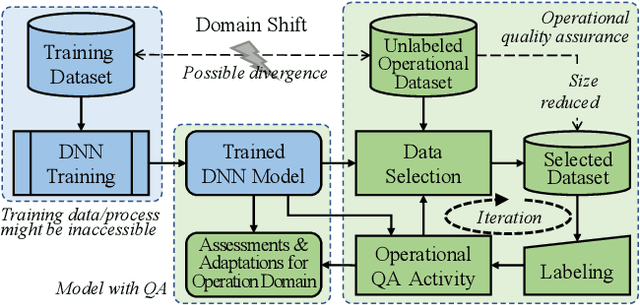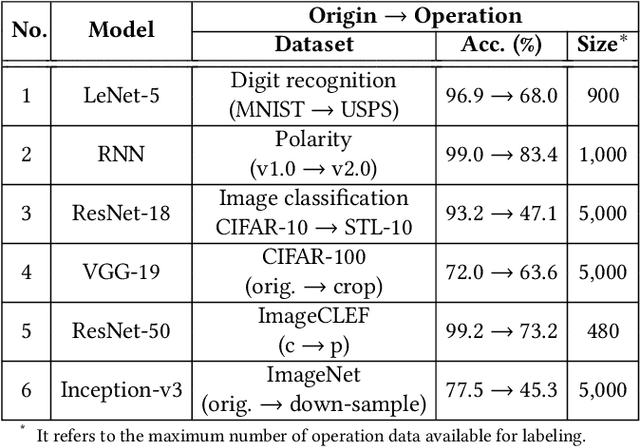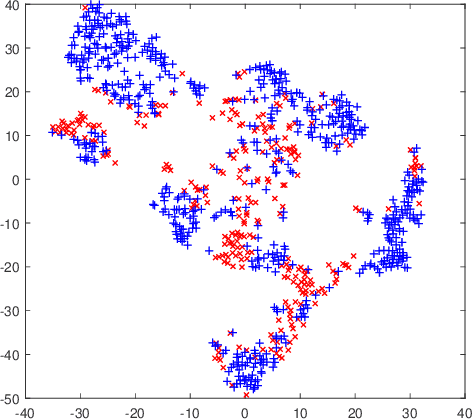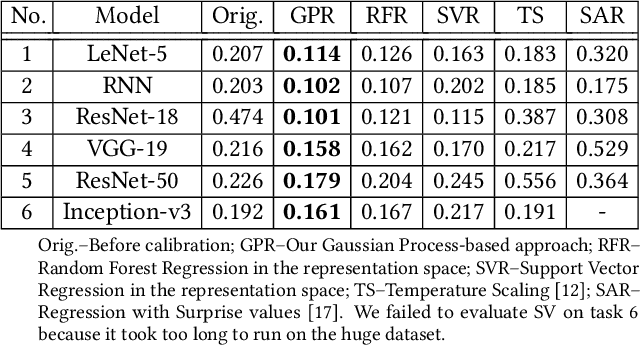Jian Lü
Softened Symbol Grounding for Neuro-symbolic Systems
Mar 01, 2024



Abstract:Neuro-symbolic learning generally consists of two separated worlds, i.e., neural network training and symbolic constraint solving, whose success hinges on symbol grounding, a fundamental problem in AI. This paper presents a novel, softened symbol grounding process, bridging the gap between the two worlds, and resulting in an effective and efficient neuro-symbolic learning framework. Technically, the framework features (1) modeling of symbol solution states as a Boltzmann distribution, which avoids expensive state searching and facilitates mutually beneficial interactions between network training and symbolic reasoning;(2) a new MCMC technique leveraging projection and SMT solvers, which efficiently samples from disconnected symbol solution spaces; (3) an annealing mechanism that can escape from %being trapped into sub-optimal symbol groundings. Experiments with three representative neuro symbolic learning tasks demonstrate that, owining to its superior symbol grounding capability, our framework successfully solves problems well beyond the frontier of the existing proposals.
Learning with Logical Constraints but without Shortcut Satisfaction
Mar 01, 2024



Abstract:Recent studies in neuro-symbolic learning have explored the integration of logical knowledge into deep learning via encoding logical constraints as an additional loss function. However, existing approaches tend to vacuously satisfy logical constraints through shortcuts, failing to fully exploit the knowledge. In this paper, we present a new framework for learning with logical constraints. Specifically, we address the shortcut satisfaction issue by introducing dual variables for logical connectives, encoding how the constraint is satisfied. We further propose a variational framework where the encoded logical constraint is expressed as a distributional loss that is compatible with the model's original training loss. The theoretical analysis shows that the proposed approach bears salient properties, and the experimental evaluations demonstrate its superior performance in both model generalizability and constraint satisfaction.
Operational Calibration: Debugging Confidence Errors for DNNs in the Field
Oct 06, 2019



Abstract:Trained DNN models are increasingly adopted as integral parts of software systems. However, they are often over-confident, especially in practical operation domains where slight divergence from their training data almost always exists. To minimize the loss due to inaccurate confidence, operational calibration, i.e., calibrating the confidence function of a DNN classifier against its operation domain, becomes a necessary debugging step in the engineering of the whole system. Operational calibration is difficult considering the limited budget of labeling operation data and the weak interpretability of DNN models. We propose a Bayesian approach to operational calibration that gradually corrects the confidence given by the model under calibration with a small number of labeled operational data deliberately selected from a larger set of unlabeled operational data. Exploiting the locality of the learned representation of the DNN model and modeling the calibration as Gaussian Process Regression, the approach achieves impressive efficacy and efficiency. Comprehensive experiments with various practical data sets and DNN models show that it significantly outperformed alternative methods, and in some difficult tasks it eliminated about 71% to 97% high-confidence errors with only about 10% of the minimal amount of labeled operation data needed for practical learning techniques to barely work.
Boosting Operational DNN Testing Efficiency through Conditioning
Jun 27, 2019



Abstract:With the increasing adoption of Deep Neural Network (DNN) models as integral parts of software systems, efficient operational testing of DNNs is much in demand to ensure these models' actual performance in field conditions. A challenge is that the testing often needs to produce precise results with a very limited budget for labeling data collected in field. Viewing software testing as a practice of reliability estimation through statistical sampling, we re-interpret the idea behind conventional structural coverages as conditioning for variance reduction. With this insight we propose an efficient DNN testing method based on the conditioning on the representation learned by the DNN model under testing. The representation is defined by the probability distribution of the output of neurons in the last hidden layer of the model. To sample from this high dimensional distribution in which the operational data are sparsely distributed, we design an algorithm leveraging cross entropy minimization. Experiments with various DNN models and datasets were conducted to evaluate the general efficiency of the approach. The results show that, compared with simple random sampling, this approach requires only about a half of labeled inputs to achieve the same level of precision.
 Add to Chrome
Add to Chrome Add to Firefox
Add to Firefox Add to Edge
Add to Edge